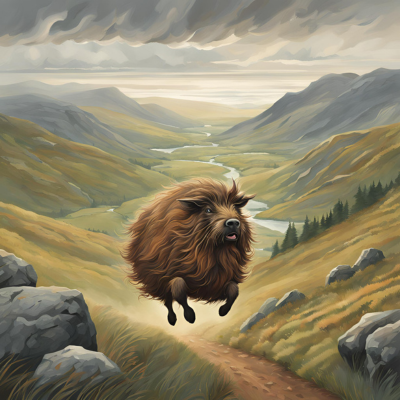The tale usually describes the haggis as a quirky, asymmetrical creature with legs of different lengths—two shorter legs on one side and two longer legs on the other. This adaptation allows it to run easily around the steep, sloped hills of the Highlands, always moving in a circular pattern.
Characteristics of the Mythical Haggis
- Physical Appearance: The wild haggis is typically depicted as a small, round, furry animal with a quirky gait due to its uneven legs. This unique feature supposedly helps it keep its balance as it races along the hillsides. Its fur is said to blend perfectly with the heather and grasses, making it nearly impossible to spot.
- Behaviour: The wild haggis is considered incredibly shy and difficult to catch. Locals claim that the only way to capture one is by chasing it in the opposite direction of its natural circular run—this disorients the creature and makes it easier to snare. According to the myth, hunting wild haggis requires both skill and patience.
- Elusiveness: The haggis is known to be so elusive that it has never been caught by tourists, only by locals who know the lay of the land. There’s even a joke that haggis hunting is best done on a misty day with a dram of whisky to keep the hunter warm and “alert.”
Cultural Fun
The mythical haggis is a lighthearted way for Scots to tease outsiders, particularly tourists who are unfamiliar with the real dish. Stories of wild haggis are often shared with humour and mischief, adding a whimsical element to Scottish culture. Some even go as far as to say that the reason no one outside Scotland has ever seen one is because they are so adept at hiding in the Highlands’ misty landscape.
While completely fictional, the tale of the wild haggis is a fun representation of our love for both storytelling and tradition. It adds a playful dimension to the real dish, haggis, making it more than just a food but also a symbol of Scottish wit and humour.


